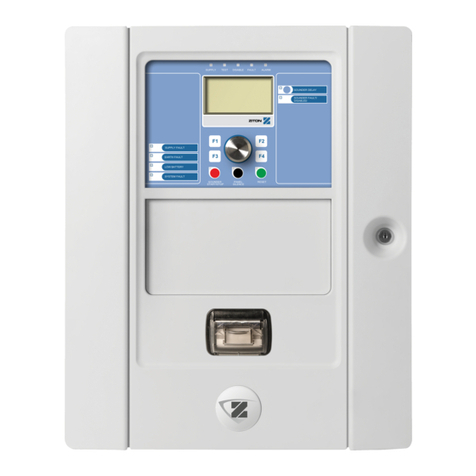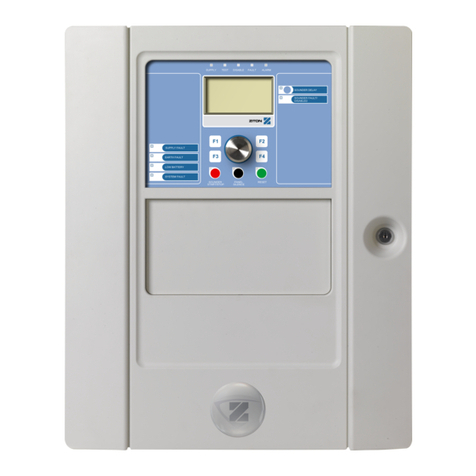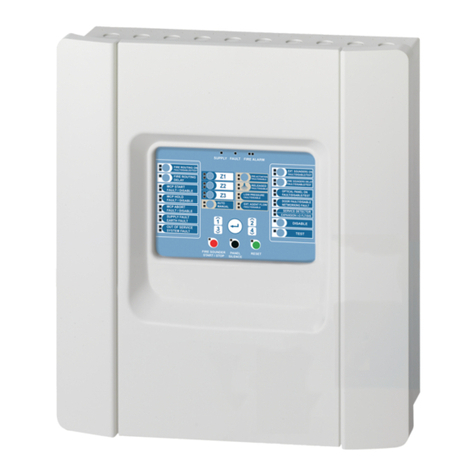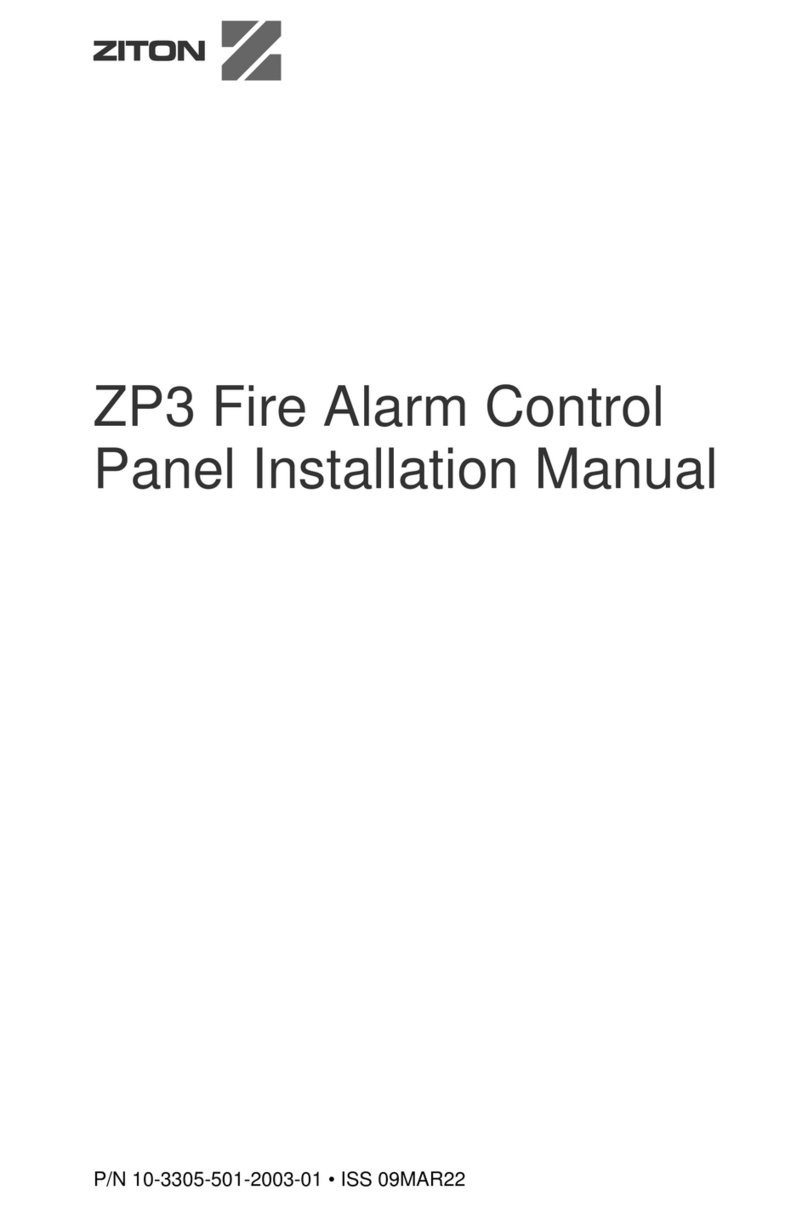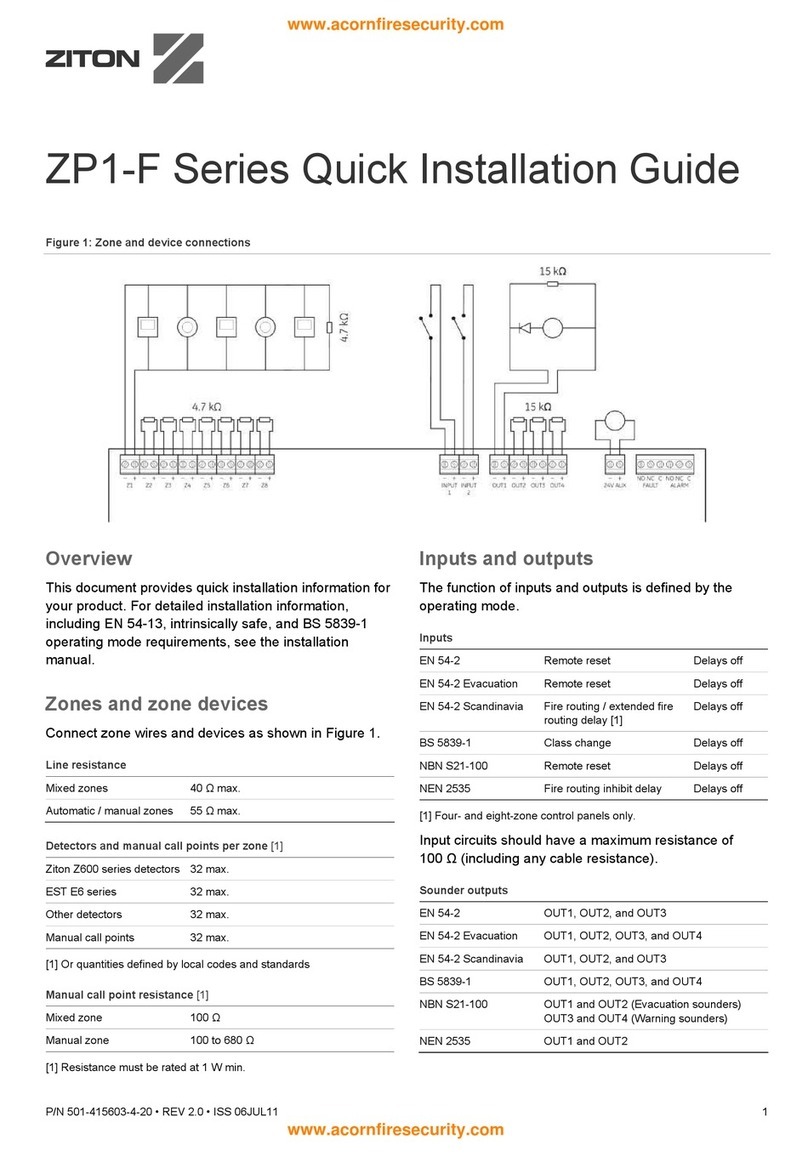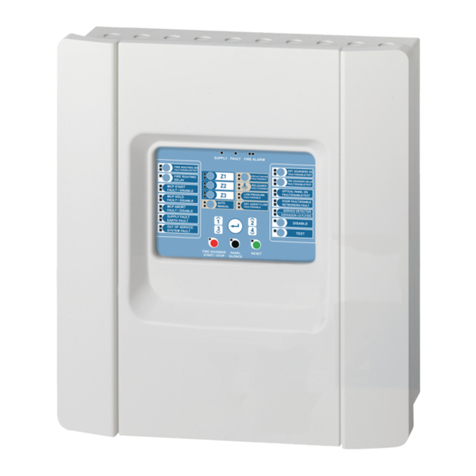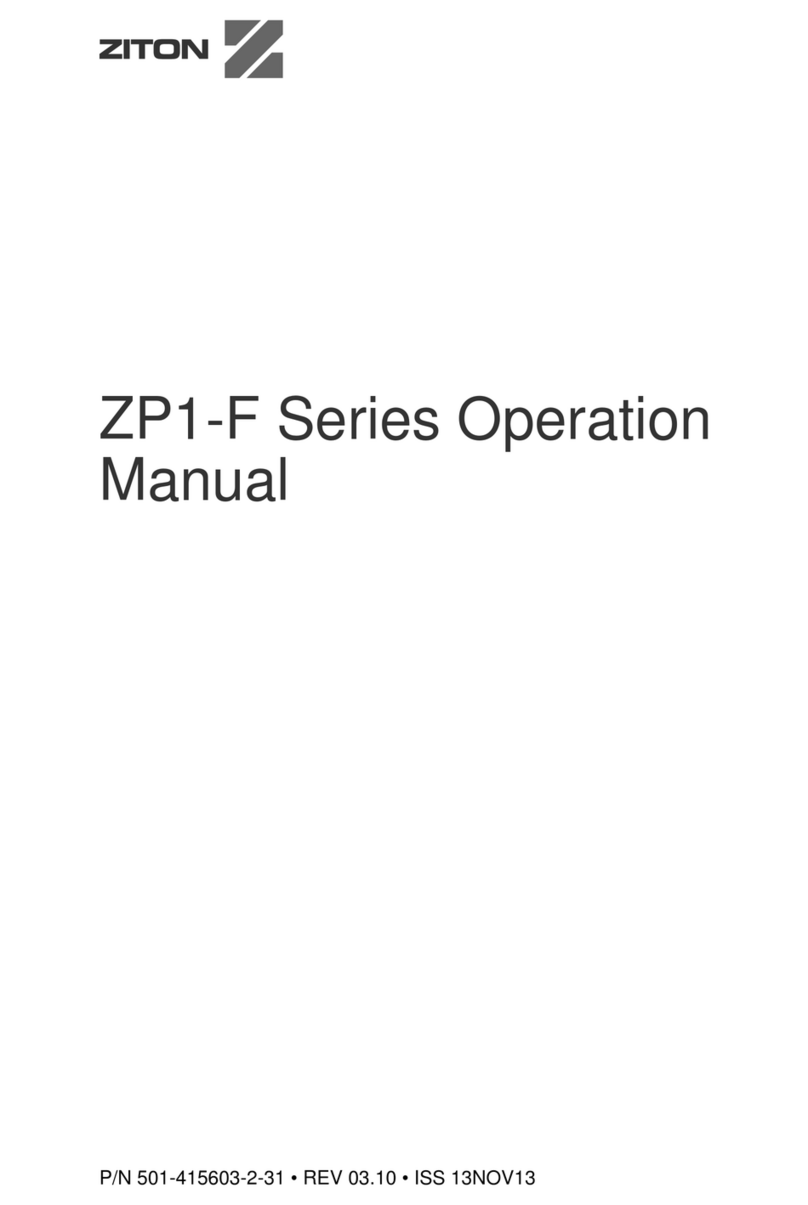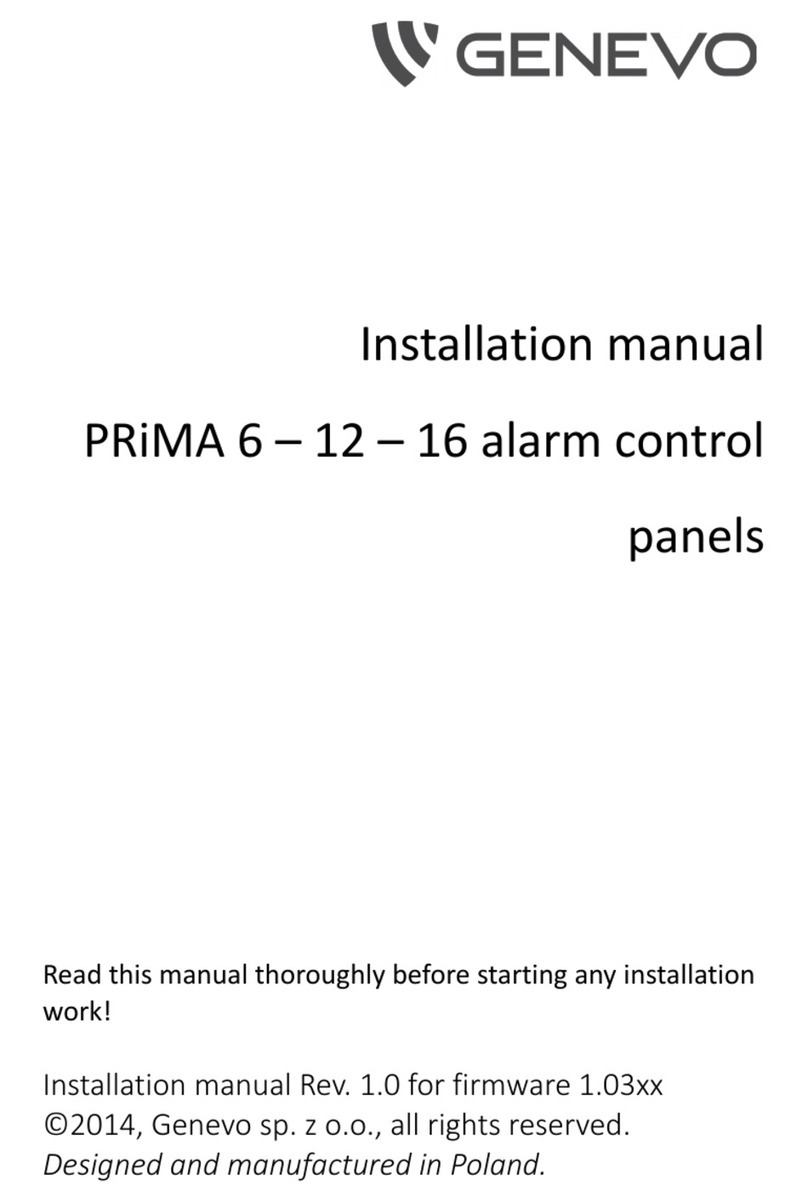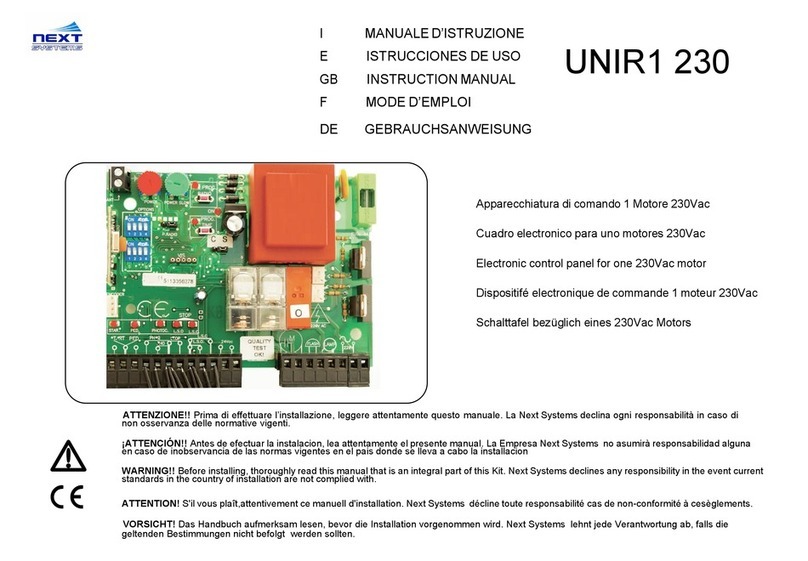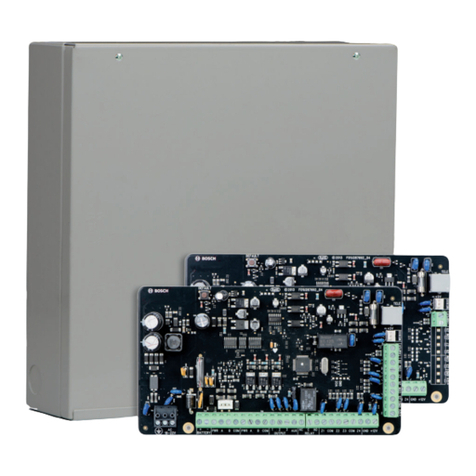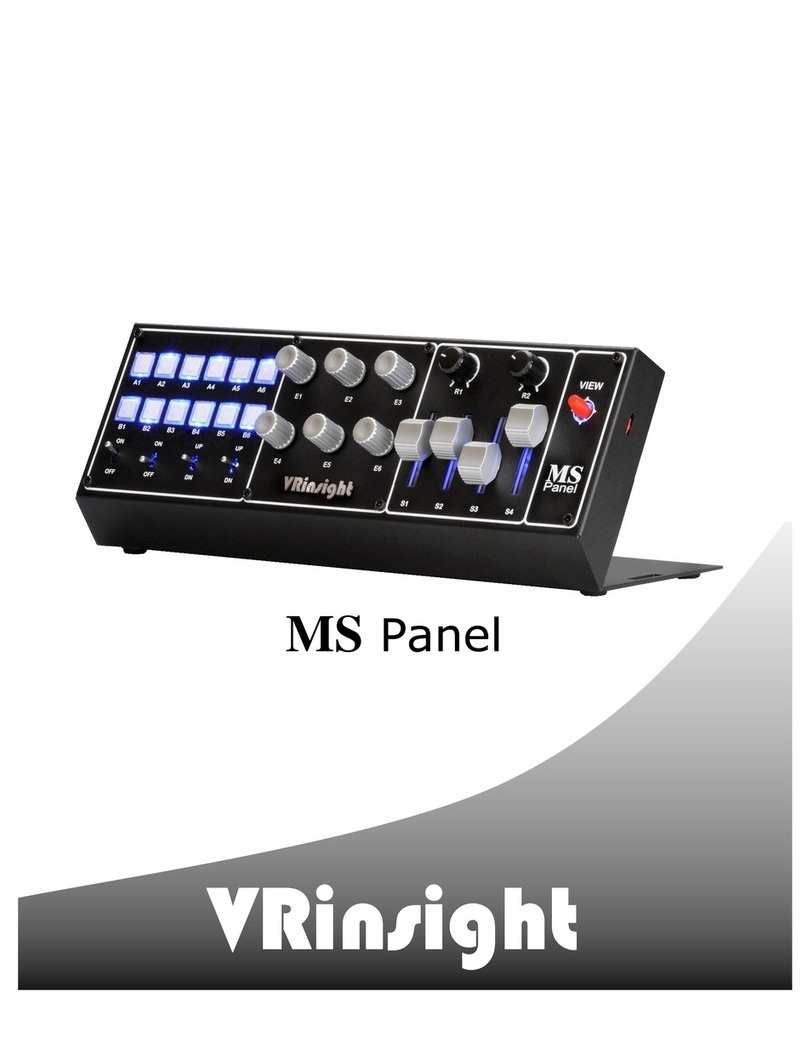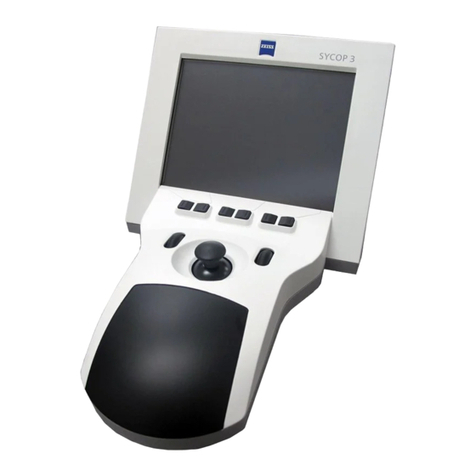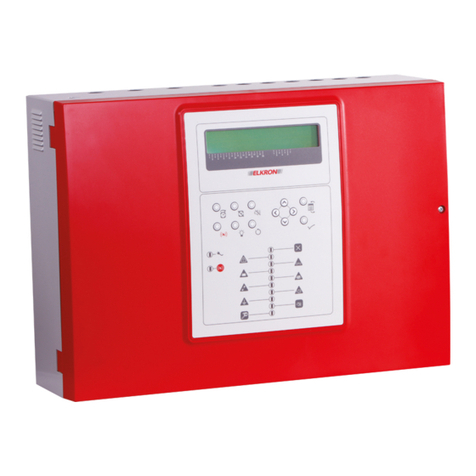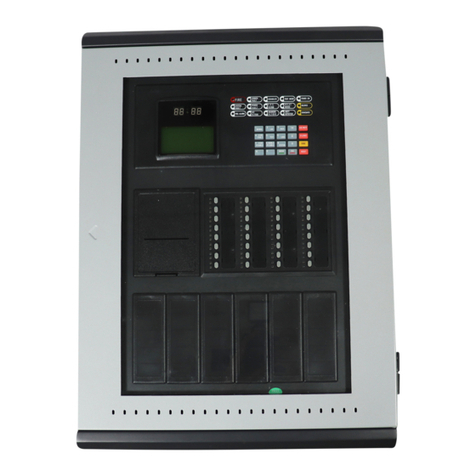
2 ZP1-X3E Series Operation Manual
Table 1: Control panel alarm states
state Description
nguishing preactivation An alarm in one fire detection zone was detected but an alarm
in another fire detection zone must be detected to activate the
extinguishing event.
In this state, fire sounders are activated immediately with a
steady tone. Fire routing, if available, is activated after any
configured delay.
If an alarm is not reported in the second zone linked to the
extinguishing detection area and if no “start extinguishing”
manual call point is activated, the preactivation alarm
continues until the control panel is reset by an authorized
operator. The system does not proceed to the extinguishing
activation alarm.
If the control panel is configured with only one zone linked to
the extinguishing area, an alarm in that zone triggers an
extinguishing activation alarm (there is no preactivation alarm).
This state is also called “in delay to release”.
The control panel has detected an extinguishing event
(depending on configuration, either one or two fire detection
zones entered into an alarm state) or a “start extinguishing”
manual call point was pressed.
In this state, extinguishing sounders are activated. Normally,
your system installer will have configured an intermittent tone.
If the extinguishing activation alarm is not cancelled (by
pressing an “abort extinguishing” manual call point) or paused
(by pressing a “hold extinguishing” manual call point), the
system proceeds to the extinguishing released state after the
configured delay. The default delay is 10 seconds, but it can
configured for up to 60 seconds.
The control panel cannot be reset during the extinguishing
activation stage and the reset button may be disabled for up to
30 minutes.
The extinguishing agent is released into the extinguishing ar
The site optical warning signs or panels are activated.
Normally, your system installer will have configured the
extinguishing sounders to change to a continuous tone.
The extinguishing process cannot be stopped once it has
started and extinguishing will continue until the extinguishing
agent containers are empty.
An alarm in a zone not linked to the extinguishing area or
triggers a fire alarm.
In this state, fire sounders and other system features or
devices are activated after any configured delay. No
extinguishing alarms or devices are activated.
